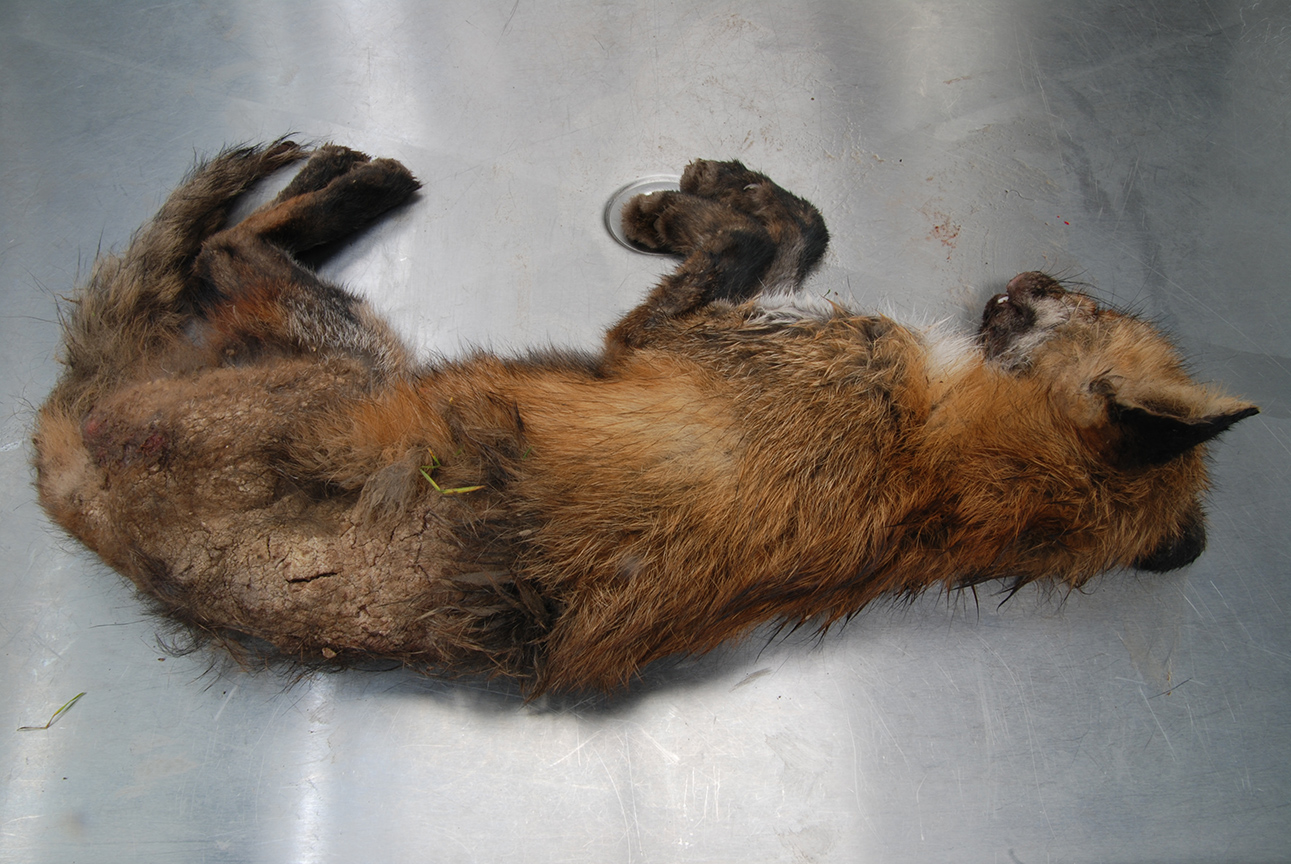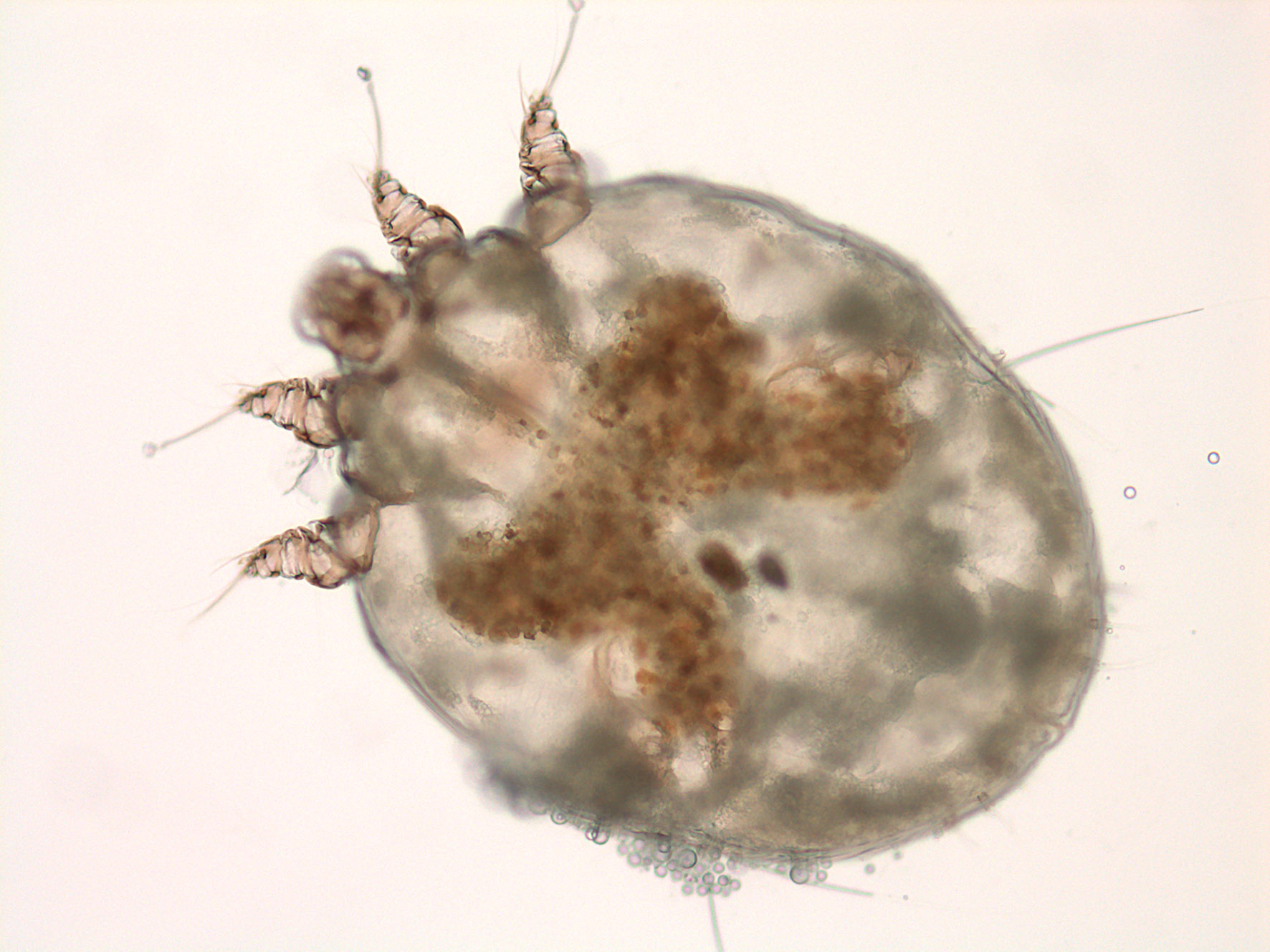

In November 2015 a fox was submitted to the DWHC for post-mortem exam. The fox came from an area in which numerous foxes with mange-like signs had been seen including five others in 2015 alone. A case of scabies (mange caused by the Sarcoptes mite) had been confirmed in a fox from this area in 2014.
After post-mortem investigation, scabies was also diagnosed in the fox submitted to the DWHC in November 2015. This animal had thickened, bald patches around the muzzle, ears and hind legs and Sarcoptes mites were seen when skin scrape samples from these areas were examined under the microscope.

Fox with mange. Photo: DWHC
Mange is a skin condition that occurs in many species including humans and is caused by many different sorts of mite. In wild animals the most common cause of mange is Sarcoptes scabiei in which case it is referred to as scabies to distinguish it from mange caused by other sorts of mite.
 |
| Sarcoptes scabiei; Photo: Erik Weerts |
Scabies worldwide in more than 100 species of mammals and at least 15 different types of mite have been identified, including S. scabiei var. canis in dogs, S. scabiei var. vulpes in foxes and S. scabiei var. rupicaprae in chamois and wild goats. Whilst some of these sorts are host-specific meaning that they can only survive long periods on hosts of a particular species, other sorts can affect various species. Despite this species-specifity transmission between different predator species or between different species of ungulates can occur. S. scabiei is predominantly transmitted via direct contact; it is very infectious and can spread rapidly through a population. Scabies epidemics are typically only reported in species that live in groups (e.g. foxes, wolves, wild goats and chamois) and they can decimate populations by 50-90%. Dogs can contract scabies via direct contact with infected foxes although the extent to which dogs are sensitive to fox mange is not well known and a variety of signs ranging from no signs to extensive mange has been described in the literature. As is the case with many parasitic infections, the severity may be partially determined by the general health status of the dog. After infection, many dogs develop immunity whereby subsequent infection is unlikely to cause signs.
Whilst these and other forms of Sarcoptes mites can affect humans, for example via direct contact with infected animals, symptoms are typically much milder than those caused by human Sarcoptes mites.
More information about mange in humans is available on the website of the Centers for Disease Control and Prevention.
In order to allow the DWHC to continue monitoring the incidence and distribution of mange in foxes please inform us if you find a dead fox or spot live foxes with mange-like lesions in Limburg, particularly the area around Leudal. Please include in your mail to m.montizaan@uu.nl, the precise location, the date of the sighting and, if possible, a photo.